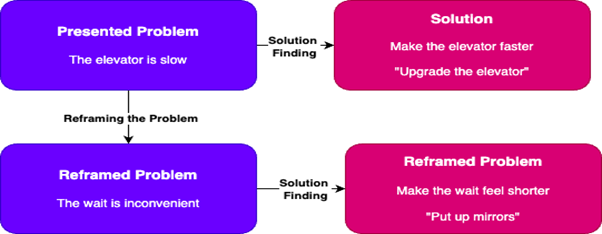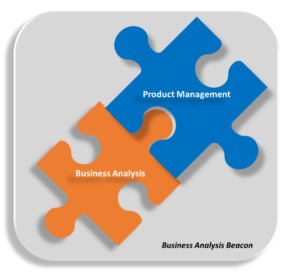“BREAKING THE FRAME”: A Paradigm Shift in Problem-Solving
In the realm of business analysis, problem-solving isn’t just a task; it’s a craft. We’re constantly challenged to find solutions to complex issues that impact our organizations’ success. Let us explore a transformative concept in problem-solving: “Breaking the Frame”!
At its core, breaking the frame is about challenging the status quo and approaching problems from a fresh perspective. It’s about stepping outside the boundaries of conventional thinking to uncover hidden opportunities and drive meaningful change.
Consider the “Slow Elevator Story.” Tenants in a building complained about the sluggishness of the elevator, prompting the manager to seek solutions. Traditional problem-solving methods would have led to expensive elevator upgrades. However, by thinking outside the box, a simple yet effective solution was found: installing a mirror in the elevator. This small change altered the perception of time, reducing complaints without the need for costly renovations.
Advertisement
So, how can we apply this concept of breaking the frame to our own problem-solving endeavours?

- Reframing the problem: Instead of accepting the problem as presented, dig deeper to uncover its root causes and underlying assumptions.
- Diverse Perspectives: Embrace diverse viewpoints and collaborate with colleagues from various backgrounds to gain fresh insights into the problem.
- Creative Solutions: Be open to unconventional ideas and approaches that may lead to innovative solutions beyond traditional boundaries.
- Holistic Analysis: Consider the broader context surrounding the problem, including external factors, stakeholders’ perspectives, and long-term implications.
- Iterative Approach: Adopt an iterative problem-solving approach, where solutions are continuously refined based on feedback and new insights.
- Experimentation: Embrace a culture of experimentation, where hypotheses are tested, and failures are viewed as learning opportunities.
- Data-Driven Decision Making: Utilize data and analytics to inform problem-solving, ensuring decisions are grounded in evidence and insights.
- User-Centric Design: Place the end-user at the centre of problem-solving efforts, empathizing with their needs and preferences.
The elevator may or may not be slow, but the point here is “Is there a better or smarter way to solve the problem?” . By reframing our approach to problem-solving, we can uncover hidden opportunities and propel our organizations forward.
In the realm of business analysis, breaking the frame isn’t just about solving problems; it’s about driving innovation and creating value. By reframing our approach to problem-solving, we can uncover hidden opportunities and propel our organizations forward.
“If I had a hour to solve a problem, I’d spend 55 minutes thinking about the problem and 5 mins thinking about solutions” – Albert Einstein
Therefore, let’s never simply acknowledge the problem as it’s presented. Instead, let’s break free from conventional thinking, explore beyond the established boundaries, and rephrase the given problem to uncover its underlying root causes. By doing so, we can avoid solving the wrong problems and focus on addressing the correct ones.
The key to effective problem-solving lies in embracing creativity, diversity, and a willingness to challenge the norm. Let’s embark on this journey of breaking the frame and revolutionize our approach to problem-solving in business analysis.







